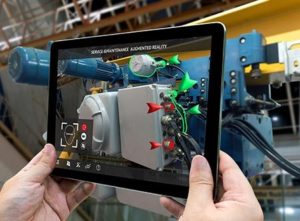Augumenta Introduces Cloud-Accessible Studio Tool and Templates for Augmented Reality Application Development
Augumenta, a company supplying Augmented Reality applications and development tools to organizations that use Smartglasses, are developing AR applications with the introduction of Augumenta Studio.
This is a cloud-based tool which allows developers to quickly design AR applications for smartglass-equipped workers using pre-built templates, libraries of control elements such as meters and gauges, and Augumenta’s virtual surface tools and gesture-control software.
Augumenta Studio supports the application design for the Augumenta SmartPanel application template. It allows workers with Smartglasses can see and operate virtual control panels for machines that appear as a blank surface to others. It’s used to set-up the virtual control panel, providing highly configurable and flexible human-machine interaction for industrial, commercial and IoT applications.
Tero Aaltonen, Co-Founder and CEO of Augumenta says, “Augmented Reality provides manufacturing organizations with real-time access to critical factory data and the ability to control machines and production lines without accessing a physical control station, resulting in shorter problem-solving times and greater shop floor efficiency.”
The Augumenta SmartPanel and SmartAlert application templates give enterprise customers and developers an unprecedented level of flexibility paired with privacy and security. Displays are completely configurable and only an authorized smartglass user is able to view data and controls. Displays also can contain different information and controls based on the user’s role. This is useful not just in industrial applications but also in operating medical monitoring and diagnostic systems.
